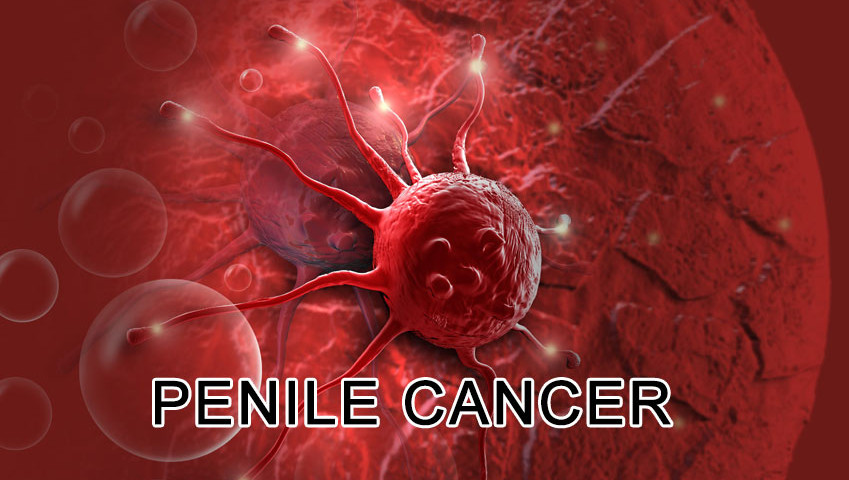Cancer of the Penis
Cancer of the penis is extremely rare in the United States, affecting only about 1,500 men each year, or about 1 in every 100,000 men. The penile cancer rate is much higher among men in India and some South American countries, where circumcision at birth is not as common as in the United States.
The risks for penile cancer include:
![]() Age: Most cases are seen in men aged 50-70, although nearly a third of cases occur in men under 50.
Age: Most cases are seen in men aged 50-70, although nearly a third of cases occur in men under 50.
![]() Smoking: Men who either chew or smoke tobacco are more at risk for penile cancer.
Smoking: Men who either chew or smoke tobacco are more at risk for penile cancer.
![]() Human Papillomavirus ( HPV ): This sexually transmitted disease has more than a dozen subtypes. HPV 16 and HPV 18 are most frequently linked to penile cancer. See genital warts for more.
Human Papillomavirus ( HPV ): This sexually transmitted disease has more than a dozen subtypes. HPV 16 and HPV 18 are most frequently linked to penile cancer. See genital warts for more.
![]() Lack of circumcision at birth: Studies have shown that penile cancer rates are higher in populations where circumcision is done later or not at all. See our circumcision articles for the pros and cons of circumcision.
Lack of circumcision at birth: Studies have shown that penile cancer rates are higher in populations where circumcision is done later or not at all. See our circumcision articles for the pros and cons of circumcision.
![]() Phimosis: a condition in which it’s difficult to pull back the foreskin, which can lead to the buildup of body oils, bacteria and other debris known as smegma.
Phimosis: a condition in which it’s difficult to pull back the foreskin, which can lead to the buildup of body oils, bacteria and other debris known as smegma.
Symptoms
Penile cancer starts on the glans (head), or tip, of the penis and spreads from there. Some men may have obvious symptoms in the early stages, while others may not have any symptoms until the disease has advanced. Although it may not mean cancer, any abnormalities of the penis should be reported to your doctor, or health care provider as soon as possible.
Unfortunately, many men are reluctant to discuss these issues with their physician, and may delay seeking treatment until the disease is advanced and then harder to treat.
Men who have retained their foreskin need to examine the area underneath the foreskin regularly, as well as keeping the area clean to lower their risk. Penile cancer symptoms may include:
- A wart-like growth or lesion
- An open sore that won’t heal
- A reddish rash
- Persistent, smelly discharge under the foreskin
![]()
Treatment
Treating penile cancer depends on the stage of disease. Surgery is the most common form of therapy, but laser therapy and radiation can be used for smaller tumors. Surgery to remove all or part of the penis is called penectomy:
Partial penectomy is a frequently-used form of therapy. The tumor is removed along with a margin of normal tissue. Historically, a two-centimeter margin was obtained in all cases, but more recent data suggest that such wide margins may not be necessary. Surgeons are currently attempting to spare as much of the glans (head) and shaft as possible to retain urinary and sexual function.
Total penectomy involves removal of the entire penis for large tumors. The surgeon reroutes the urethra behind the testicles and a urethrostomy (hole) is created so the patient can urinate. Penile reconstruction surgery using a flap of skin from the forearm to create a new penis has been done, but the procedure is not done very often.
For very small superficial tumors, penile cancer may be treated with a laser beam that destroys the tumor, radiation therapy and in some cases, a cream containing the chemotherapy drug flourouracil applied to the skin. These treatments offer the best opportunity to spare the glans penis and sexual function. That is why it is important to find penile tumors early by seeking immediate medical attention for any abnormalities on the penis.
